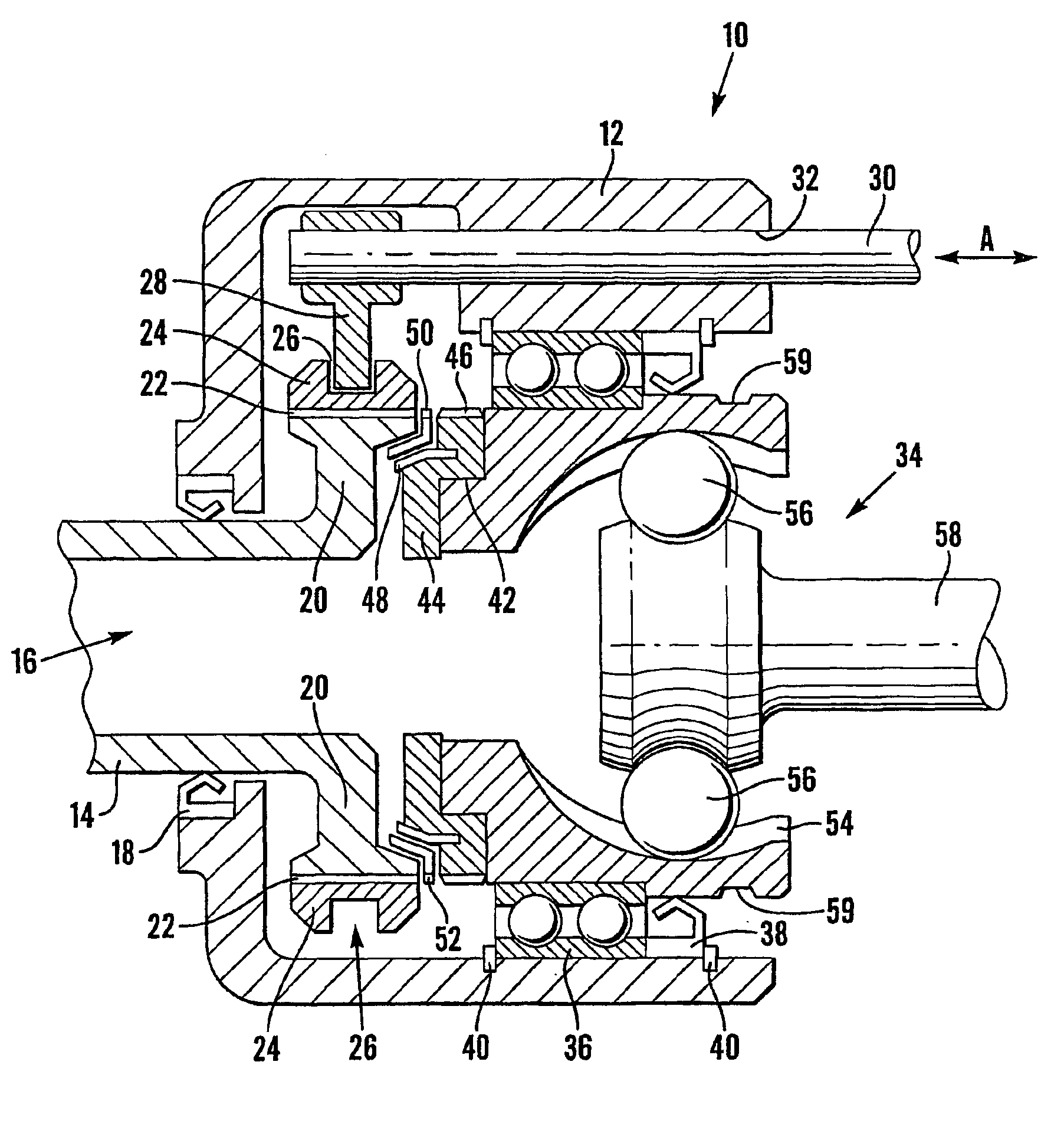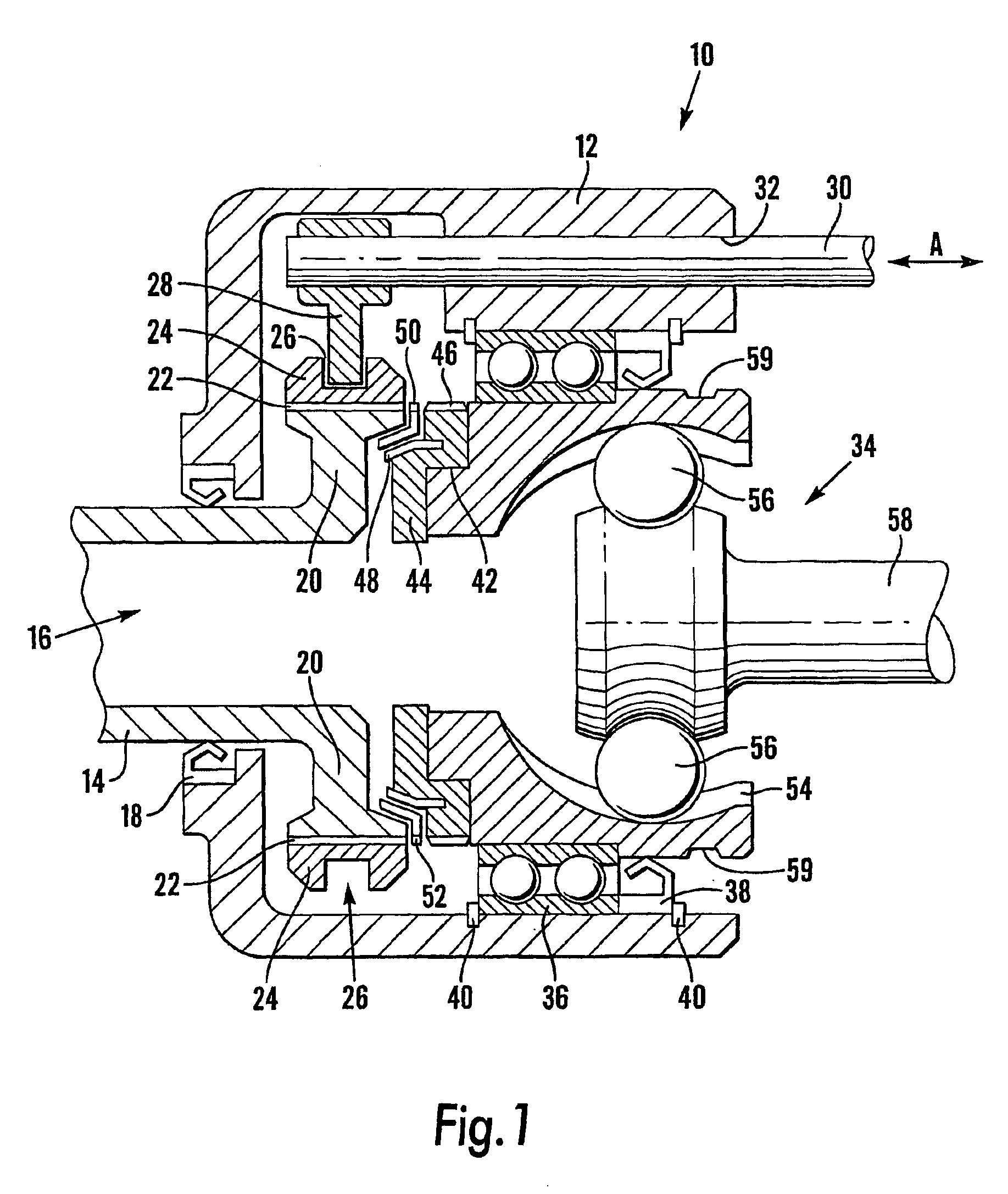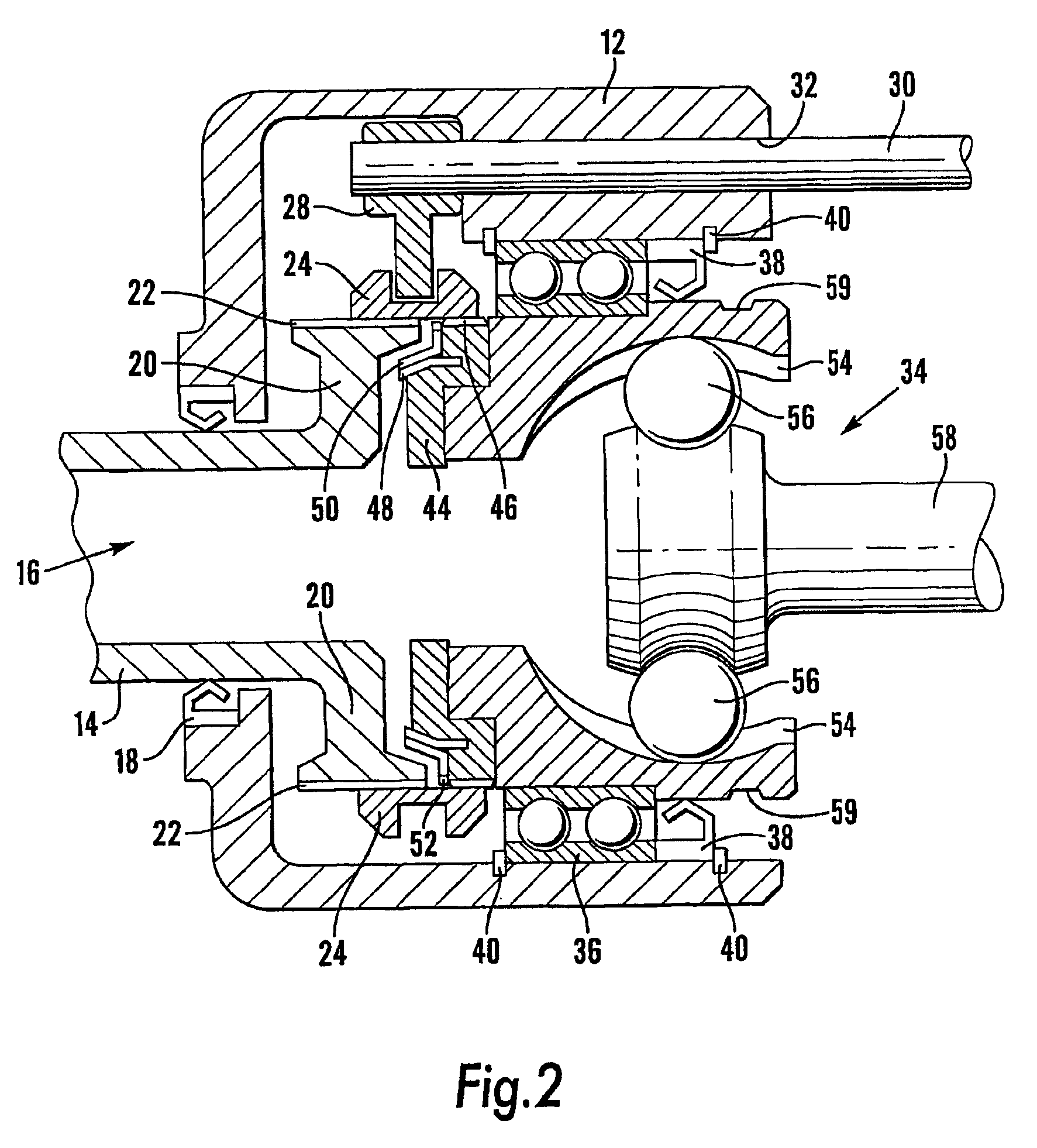Amphibious vehicle comprising an improved decoupler
a technology of decoupler and amphibious vehicle, which is applied in the direction of couplings, vessel construction, and propellers, etc., can solve the problems of reducing the available space for external drive shaft decouplers, prohibitively expensive dedicated transmissions, and increasing the cost of decouplings, so as to achieve the effect of reducing costs
- Summary
- Abstract
- Description
- Claims
- Application Information
AI Technical Summary
Benefits of technology
Problems solved by technology
Method used
Image
Examples
Embodiment Construction
[0022]Referring firstly to FIG. 1, a decoupler incorporating a constant velocity CV joint is indicated generally at 10. The decoupler 10 is of the form of an integrated unit, which is housed in a casing 12. A driving shaft 14, which may be from the output stage of a gearbox or from a differential (not shown), enters the casing 12 through a circular aperture 16 to the left hand side of the casing 12 (as viewed), and is free to rotate within the casing. An oil seal 18 seals between the driving shaft 14 and the aperture 16. The driving shaft 14 comprises an input of the decoupler 10.
[0023]The driving shaft 14 terminates inside the casing 12 in a flange 20, the periphery of which is splined 22. A drive ring 24, which is correspondingly internally splined, is in permanent driving engagement with the spline 22 and rotates with the driving shaft 14. A circumferential slot 26 is provided in the periphery of the drive ring 24, and a selector arm 28 locates in the slot 26. A rod 30, which is ...
PUM
 Login to View More
Login to View More Abstract
Description
Claims
Application Information
 Login to View More
Login to View More - R&D
- Intellectual Property
- Life Sciences
- Materials
- Tech Scout
- Unparalleled Data Quality
- Higher Quality Content
- 60% Fewer Hallucinations
Browse by: Latest US Patents, China's latest patents, Technical Efficacy Thesaurus, Application Domain, Technology Topic, Popular Technical Reports.
© 2025 PatSnap. All rights reserved.Legal|Privacy policy|Modern Slavery Act Transparency Statement|Sitemap|About US| Contact US: help@patsnap.com



